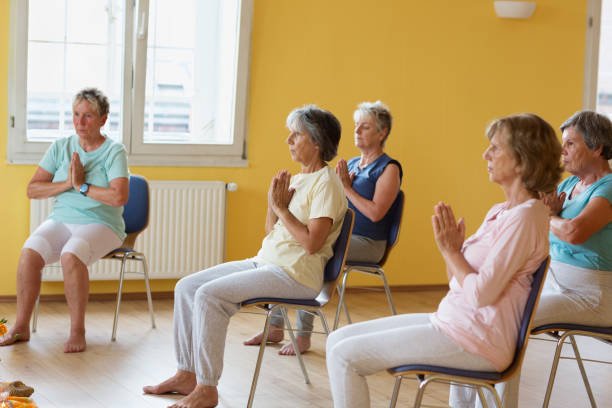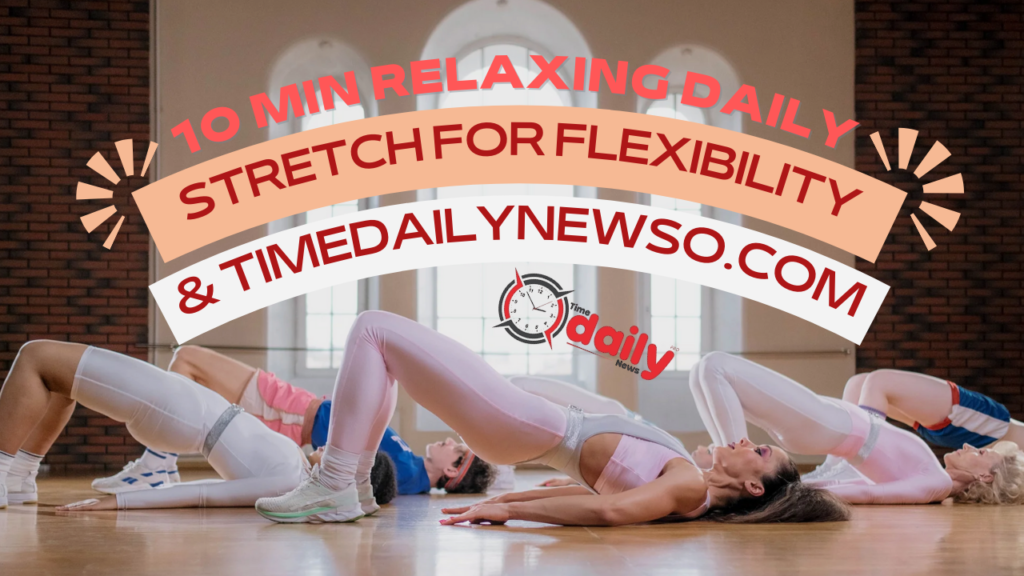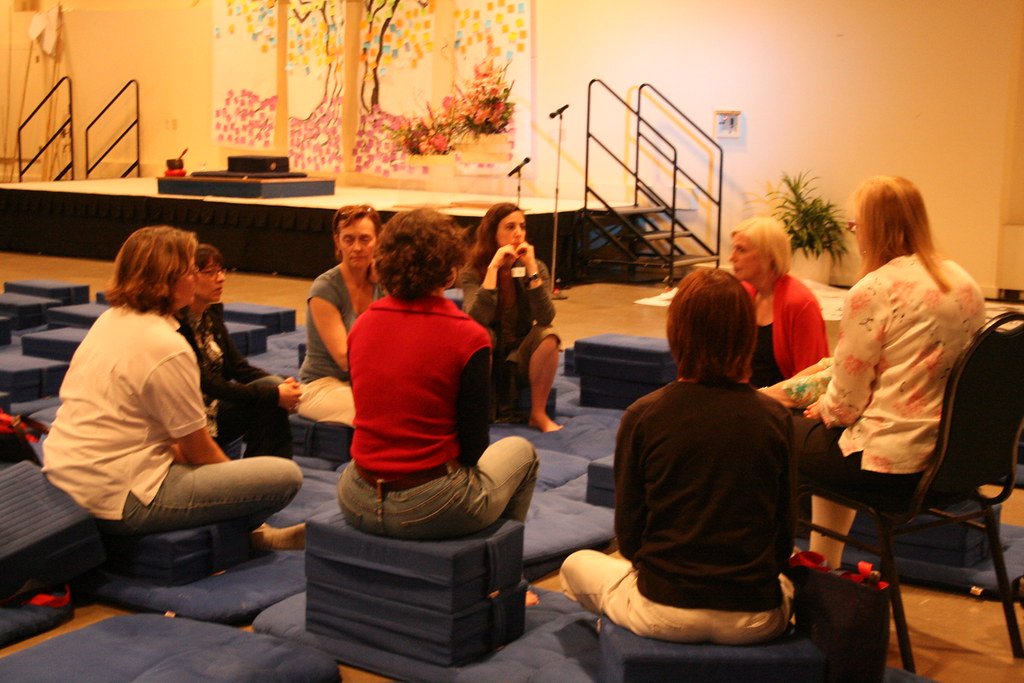It’s more important than ever. Yoga chairs offer the perfect solution that combines the old benefits of yoga with modern accessibility. The average American sits nine and a half hours a day, so it’s important that seating time movements are not only an advantage. Stool yoga is a modified form of traditional yoga that adapts the poses used for support when sitting or supporting a chair. Yoga has exchanged thousands of years in traditional form and has evolved into modern needs. A yoga chair is a versatile practice suitable for everyone, regardless of age, mobility or fitness level. Whether you work at a desk or not, you just want to have a limited mobility or a gentle way to integrate mindfulness in a day, these 10 transformative chair poses can help you revive your body and mind without leaving your seat.
The Foundations of Chair Yoga
Before immersing yourself in a particular pose, it is important to understand why yoga is special. This practice maintains all the core elements of traditional yoga physical posture, breathing tasks and mindfulness, but in reality it is accessible to everyone.
Numerous advantages of chair yoga include increased strength, better circulation, decreased tension and anxiety, increased flexibility, and even possible changes in the quality of sleep. Regular yoga practice has been found to slow down the aging-related loss of flexibility and may even increase it, especially in people 65 and older. Select a stable, wheel-free chair, sit as close to the edge as you can, keep your feet flat on the floor, and pay attention to your body during the exercise for best results.

The 10 Transformative Poses
1. Seated Cat-Cow Stretch
Your back will become more flexible as a result of this little spinal movement, which also relieves tension from extended sitting.
How to practice:
Sit flat on the floor and face the edge of the chair
Place your hands on your knees or thighs
Inhale, bend your back and lift your chest (cow)
When exhaling around the vertebrae
Repeat 5-10 breathing cycles
This pose helps maintain spinal health and mobility at the same time, gently massaging your internal organs.
2. Seated Forward Bend (Chair Uttanasana)
This classic posture stretches the hamstrings and relieves lower back tension—areas that commonly tighten during extended periods of sitting.
How to practice:
Sit on the edge of your chair
Extend your legs straight in front with feet flexed and slightly wider than hip-width
Inhale to lengthen your spine
Exhale and hinge at your hips to fold forward
Hold for 5-8 breath cycles
This pose promotes circulation to the brain and can help calm an overactive mind.
3. Seated Spinal Twist (Chair Ardha Matsyendrasana)
Twisting poses are excellent for spinal health, digestion, and releasing tension in the back, shoulders, and neck.

How to practice:
With your feet planted firmly on the ground, take a seat on the edge of your chair.
Put your right hand on your left thigh and your left on the seat behind you.
Inhale to lengthen your spine
Exhale and gently twist to the left, using your hands for support
Hold for 3-5 breaths, then switch sides
This twist helps improve spinal mobility and can aid digestion by massaging internal organs.
4. Chair Warrior I (Virabhadrasana I)
This adapted warrior pose strengthens the legs while opening the chest and shoulders.
How to practice:
Sit sideways on your chair with both feet flat on the floor
Turn your torso to face the back of the chair
Hold the back of the chair with both hands
Extend one leg back (or keep both feet grounded if needed)
Lift your chest and gently arch your back Hold for 3-5 breaths, then switch sides
This pose builds strength and confidence while improving posture.
5. Seated Eagle Arms (Garudasana Arms)
This pose targets tension in the shoulders, upper back, and between the shoulder blades—areas that commonly hold stress.

How to practice:
Sit tall in your chair
Extend your arms forward at shoulder height
Cross your right arm over your left
Bend your elbows and try to bring your palms together (or back of hands)
Lift your elbows while keeping shoulders relaxed
Hold for 3-5 breaths, then switch sides
Eagle arms release tension in the upper back and improve shoulder mobility.
6. Chair Mountain Pose (Tadasana)
This foundational pose improves posture and body awareness while creating a sense of groundedness.
How to practice:
Sit toward the edge of your chair with feet flat on the floor
Distribute your weight evenly across both sitting bones
Lengthen your spine, drawing the crown of your head toward the ceiling
Relax your shoulders down and back
Rest hands on thighs or place palms together at heart center
Breathe deeply for 5-10 breaths
This pose cultivates proper alignment and serves as an excellent reset between other poses.
7. Seated Neck Stretches
Our necks often bear the brunt of stress and poor posture, especially during desk work.
How to practice:
Sit tall with shoulders relaxed
Gently drop your right ear toward your right shoulder
Hold for 3-5 breaths
Return to center, then repeat on the left side
Next, slowly turn your head to look over your right shoulder
Hold, return to center, then repeat on the left
These stretches release tension in the neck and upper shoulders while improving range of motion.
8. Seated Heart Opener
This gentle backbend counteracts the forward hunching posture many of us adopt during desk work.

How to practice:
How to practice:
Sit toward the front edge of your chair
Place your hands behind you on the seat of the chair
Press into your hands to lift your chest upward
Draw your shoulder blades together
Look slightly upward if comfortable for your neck
Breathe 3-5
This pose can enlarge your chest, improve your posture, and increase your energy and mood.
9. Chair Pigeon Pose
This adaptation of the traditional pigeon pose targets the hips—an area where we store significant tension.
How to practice:
Sit tall in your chair
Cross your right ankle over your left knee, creating a figure-4 shape
Flex your right foot to protect your knee
For a deeper stretch, gently press down on your right knee
Hold for 5-8 breaths, then switch sides
This pose opens the hips and can help relieve lower back discomfort.
10. Chair Meditation
Ending your practice with a few minutes of seated meditation integrates the physical benefits while calming the mind.

How to practice:
Sit comfortably on your spine for a long time
Hold your hands on your thighs and laps
you can close your eyes or enjoy a soft view
Focus on natural breathing
If you walk through your heart
Continue for 2-10 minutes
Meditation has been shown to reduce stress and fear, while simultaneously promoting intellectual clarity



